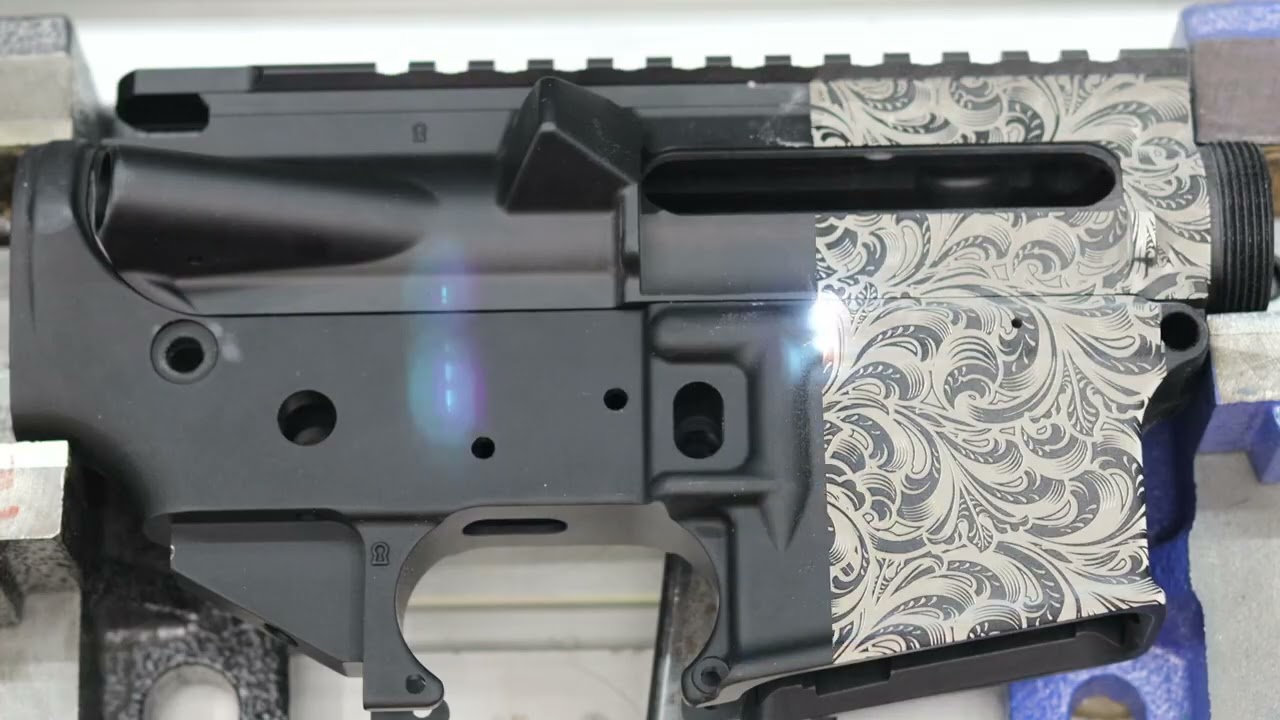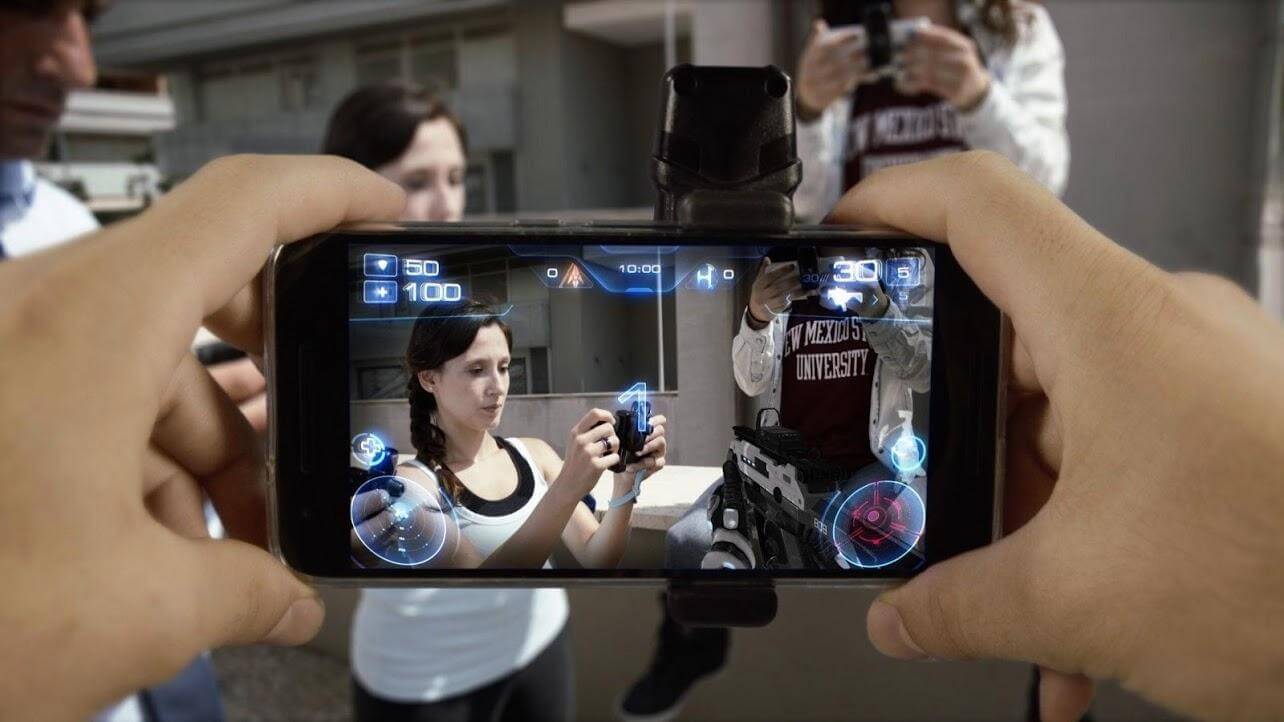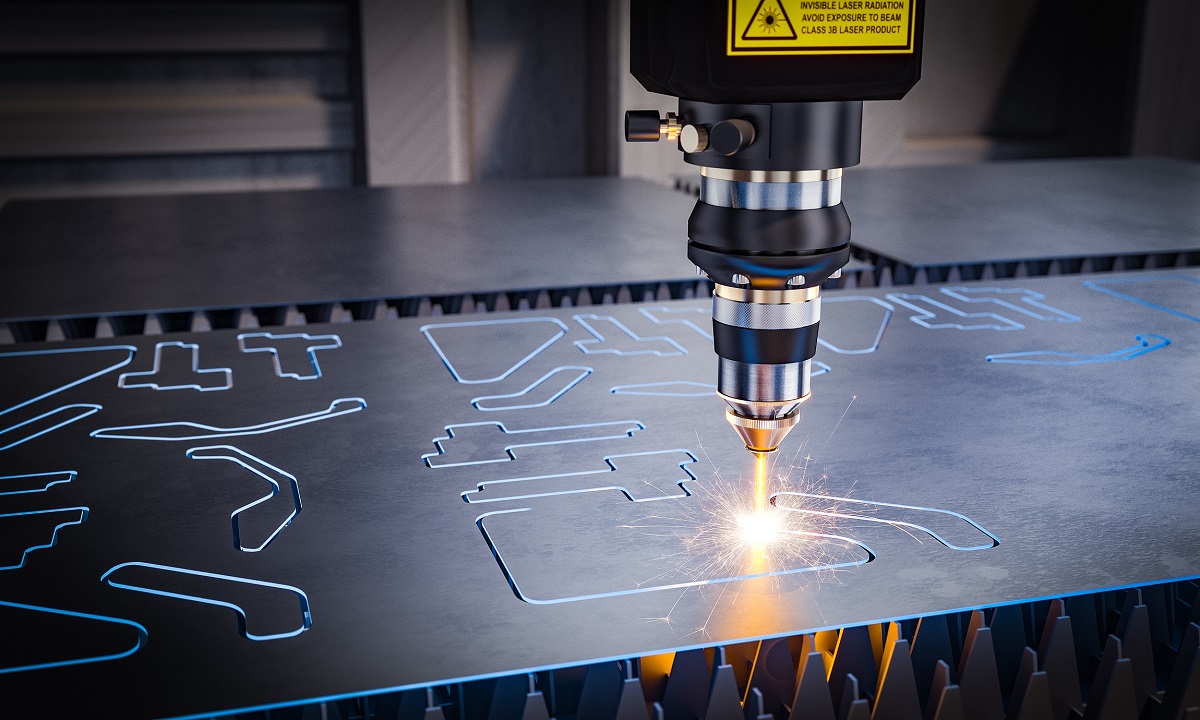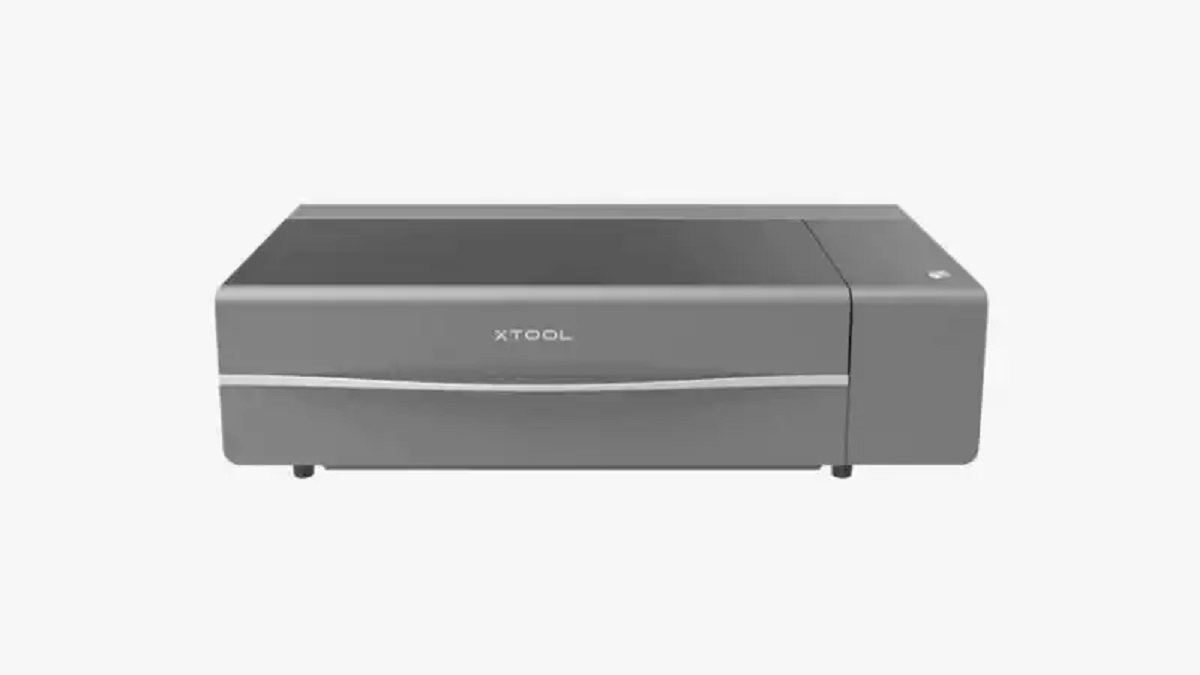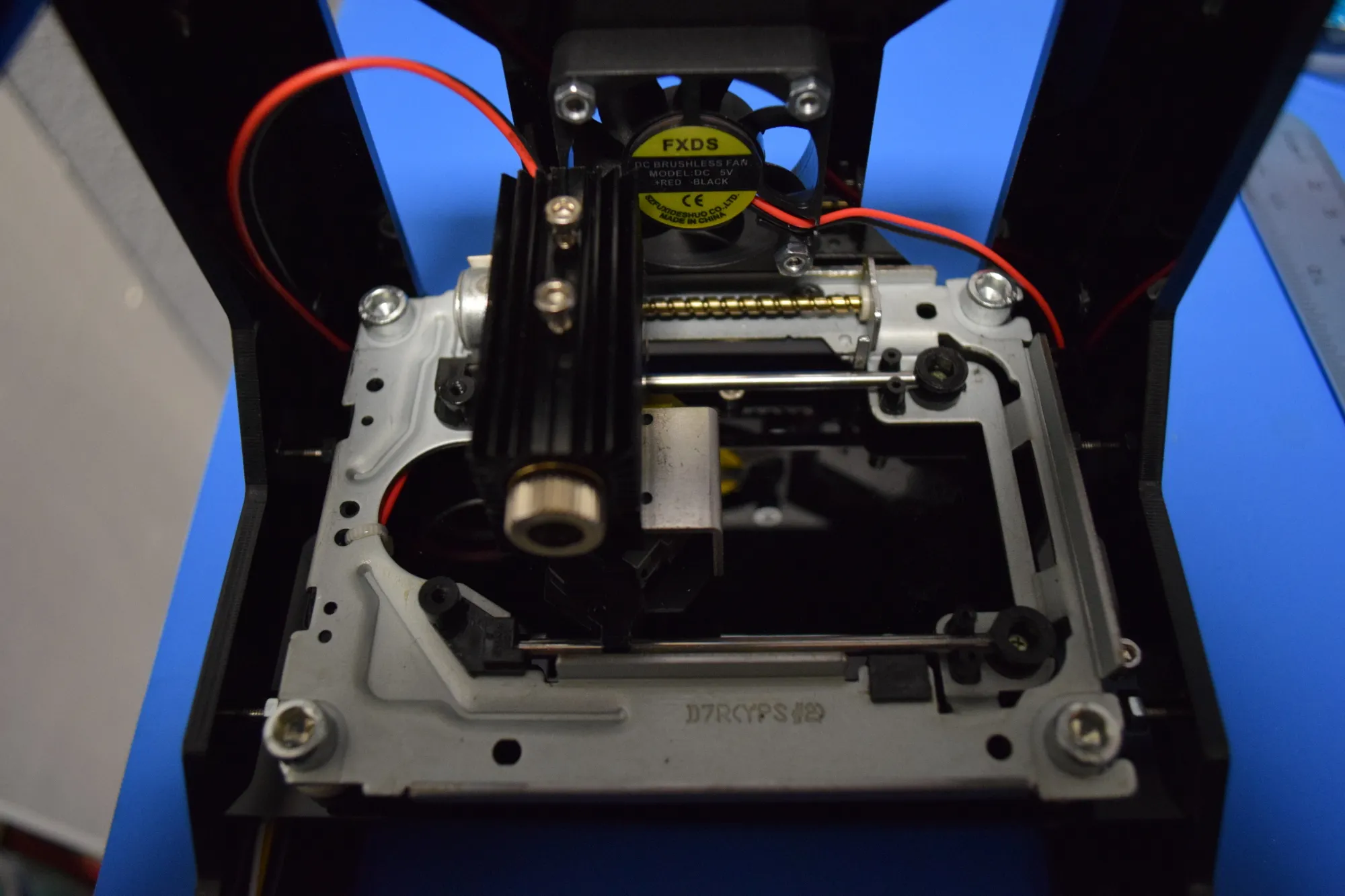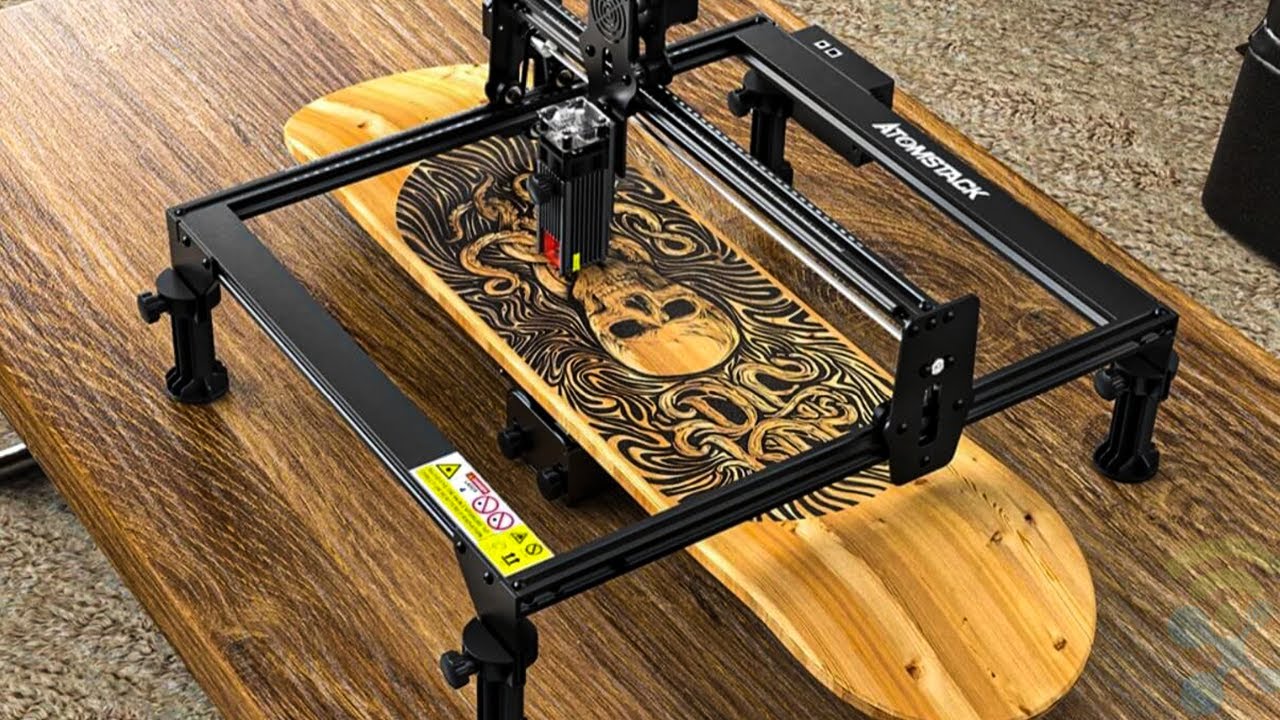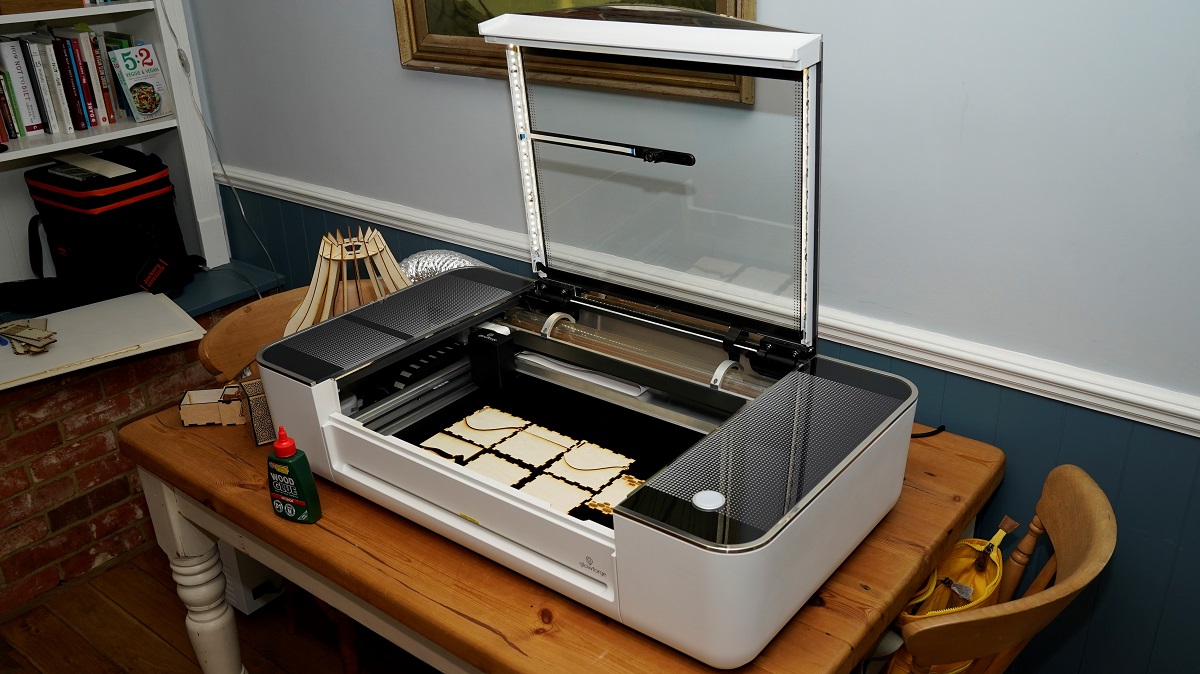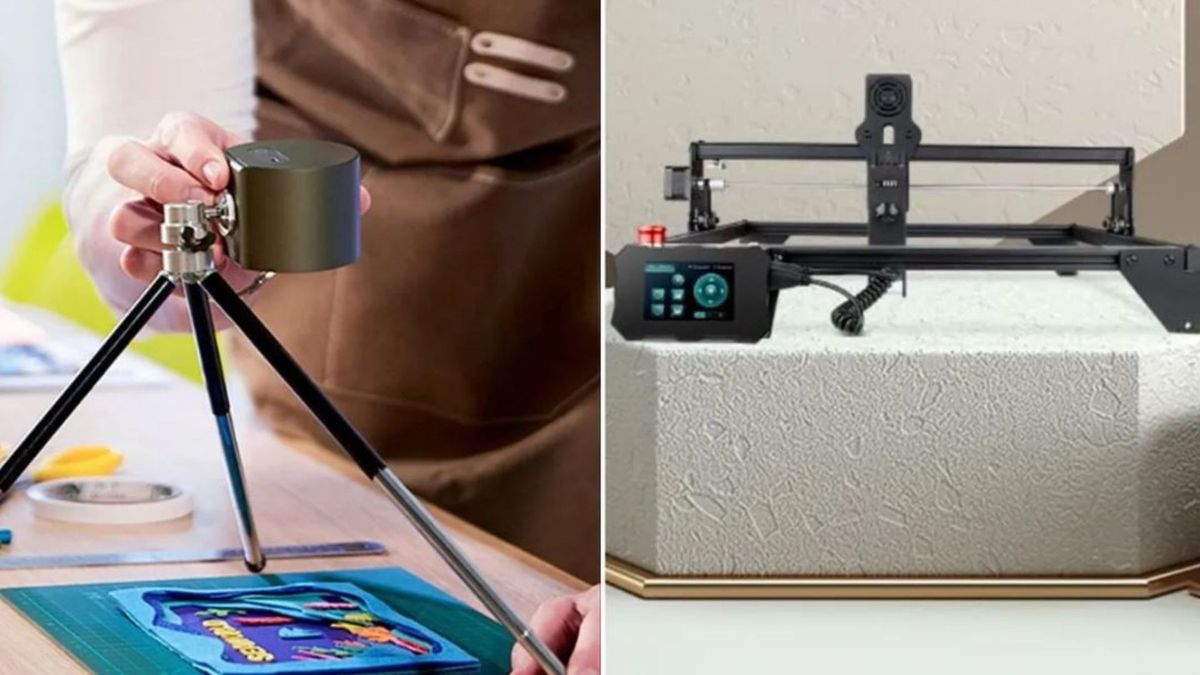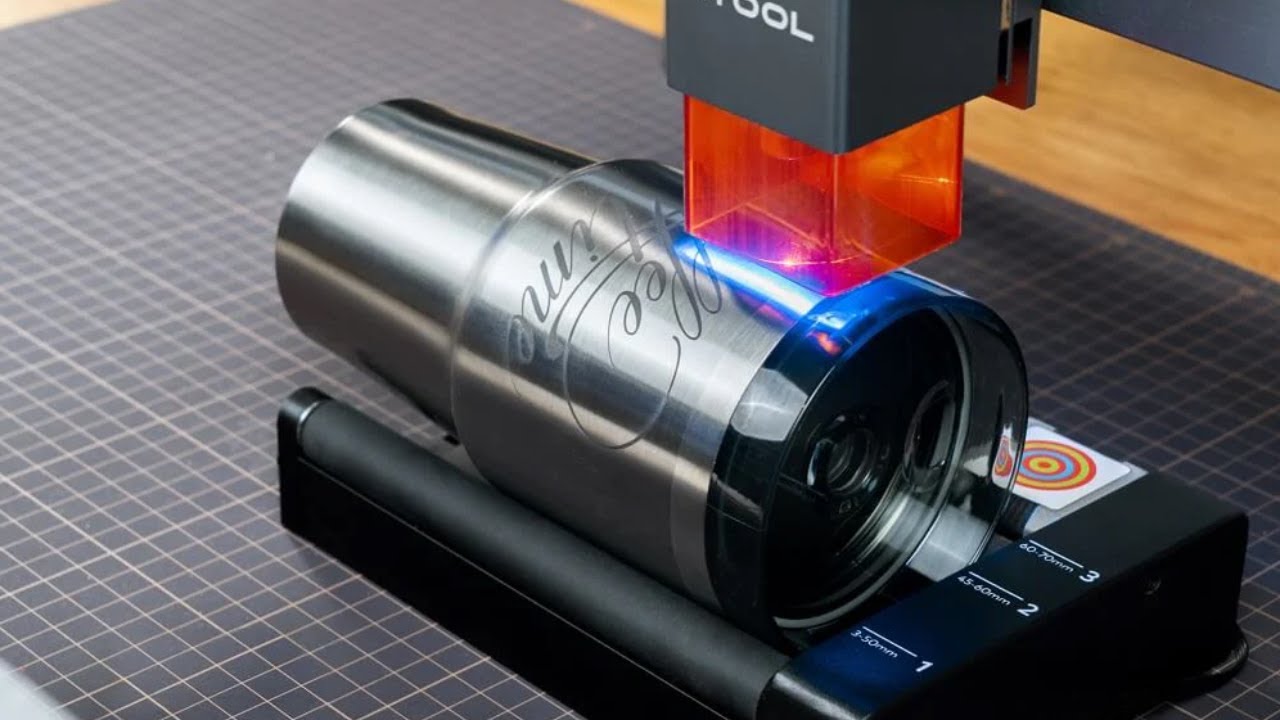html
Introduction
Welcome to this guide on laser engraving for AR15. If you’re interested in personalizing your AR15 rifle or need to comply with firearm marking regulations, laser engraving is an excellent option. Laser engraving offers a precise and durable method for adding text, designs, and markings to various materials, including metal. This article will guide you through the different types of laser engravers suitable for working on AR15 and help you choose the best option for your needs.
The AR15, also known as the ArmaLite Rifle 15, is a popular and versatile semi-automatic rifle used by firearm enthusiasts, sports shooters, and law enforcement agencies. It is known for its modularity, allowing users to customize and upgrade various components to suit their preferences and requirements. Laser engraving on AR15 not only adds a personal touch but also serves practical purposes, such as identification, branding, and compliance with ATF (Bureau of Alcohol, Tobacco, Firearms and Explosives) regulations.
When it comes to laser engraving, there are several factors to consider, such as the type of laser engraver suitable for working on metal and the specific features that make it ideal for AR15 engraving. In this guide, we will explore different types of laser engravers, including CO2 lasers, fiber lasers, and diode-pumped solid-state (DPSS) lasers, and their suitability for engraving on AR15.
By understanding the capabilities and limitations of each type of laser engraver, you can make an informed decision and select the right equipment to achieve the desired engraving results on your AR15. So, let’s delve into the world of laser engraving machines and explore which one is best suited for your AR15 engraving needs.
html
Understanding the AR15
Before diving into laser engraving for AR15, let’s take a moment to understand the rifle itself. The AR15 is a lightweight, magazine-fed, air-cooled rifle chambered for the .223 Remington/5.56 NATO cartridge. It features a modular design, allowing for easy customization and versatility.
The AR15’s popularity stems from its ergonomic design and ease of use. It incorporates a gas-operated, rotating bolt system, contributing to its reliability and manageable recoil. The rifle’s structure primarily consists of an upper and lower receiver, barrel, handguard, stock, and various interchangeable accessories.
One of the key aspects of the AR15 is its adaptability. Users can modify and upgrade a wide range of components, including barrels, triggers, grips, and rails, to suit their specific shooting preferences or intended use. This customization aspect makes the AR15 a highly sought-after firearm in the shooting community.
It is worth noting that when performing laser engraving on an AR15, you need to consider the material of the receiver. The receiver typically comes in two options: forged aluminum and polymer. Aluminum receivers are more common and provide a sturdy base for engraving, while polymer receivers may require additional precautions due to their lower heat resistance.
Whether you are an AR15 enthusiast looking to personalize your firearm or a manufacturer needing to comply with firearm identification and marking requirements, laser engraving offers a versatile, accurate, and permanent solution. By utilizing the right laser engraver, you can engrave text, logos, serial numbers, or artistic designs onto the AR15, resulting in a unique and customized firearm.
html
Importance of Laser Engraving on AR15
Laser engraving plays a significant role in the customization and identification of the AR15 rifle. Let’s explore why laser engraving is important for AR15 owners and manufacturers alike.
1. Personalization: AR15 owners often seek to personalize their rifles to reflect their individual style or to differentiate them from other firearms. Laser engraving allows for intricate designs or text to be permanently etched onto the rifle, creating a unique and personalized look.
2. Compliance and Legal Requirements: Laser engraving is crucial for compliance with ATF regulations, which mandate specific markings on firearms. Manufacturers must engrave their company name, city, state, serial number, and model designation on the lower receiver of each AR15. This ensures traceability and identification in case the firearm is lost, stolen, or involved in any criminal activities.
3. Identification and Asset Tracking: For law enforcement agencies or private security firms, laser engraving serves as a vital tool for asset tracking. By engraving unique serial numbers or codes onto AR15 rifles, it becomes easier to inventory and identify firearms, ensuring accountability and preventing unauthorized use.
4. Branding and Marketing: For manufacturers and firearm retailers, laser engraving provides an opportunity for branding and marketing. Company logos, slogans, or design elements can be laser engraved on AR15 rifles, enhancing brand visibility, and leaving a lasting impression on customers.
5. Durability and Longevity: Laser engraving on the AR15 offers exceptional durability and longevity. The process creates deep, etched marks that are resistant to wear, fading, or rubbing off. This ensures that the engraving remains legible and prominent even after years of use.
Overall, laser engraving not only enhances the visual appeal and individuality of the AR15 but also ensures compliance with legal requirements and facilitates proper firearm identification. Whether it’s for personal use or manufacturing purposes, laser engraving is an important aspect of AR15 customization and firearm marking.
html
Factors to Consider When Choosing a Laser Engraver
Selecting the right laser engraver for working on AR15 requires careful consideration of various factors. Here are some key factors to keep in mind when choosing a laser engraver:
1. Power and Engraving Depth: Ensure that the laser engraver has sufficient power to engrave on metal, specifically the materials used in AR15 receivers. The power should be capable of creating deep and clear engravings for optimal results.
2. Engraving Area: Check the engraving area dimensions to ensure it can accommodate the size of the AR15 receiver. The engraving area should be large enough to fit the receiver comfortably and allow for any desired positioning of markings or designs.
3. Laser Type: Consider the type of laser used in the engraver. CO2 lasers are commonly used for engraving on metals, including aluminum. Fiber lasers offer higher precision and are well-suited for engraving on a variety of metals. Diode-pumped solid-state (DPSS) lasers provide a good balance of power and precision.
4. Software and Compatibility: Evaluate the available software options and ensure compatibility with your operating system. The software should offer intuitive design tools, allowing for easy creation and editing of engraving files. Compatibility with popular file formats, such as SVG or DXF, is also important.
5. Speed and Efficiency: Consider the engraving speed and efficiency of the laser engraver. Faster engraving speeds can increase productivity, especially if you have a large number of AR15 receivers to engrave. However, it is essential to balance speed with the quality and accuracy of the engraving.
6. Ease of Use and Maintenance: Look for a laser engraver that is user-friendly and easy to operate. Consider factors such as intuitive controls, automatic focus adjustment, and ease of maintenance. A well-designed machine can save time and effort in the engraving process.
7. Budget: Finally, consider your budget and the overall cost of the laser engraver. Take into account not only the initial purchase price but also any additional expenses such as maintenance, replacement parts, and ongoing operational costs.
By considering these factors and weighing their importance based on your specific needs, you can make an informed decision when selecting a laser engraver for working on AR15. Remember that finding the right laser engraver is crucial for achieving high-quality and satisfactory results.
html
CO2 Lasers
CO2 lasers are a popular choice for laser engraving on various materials, including metals like aluminum. These gas lasers generate a laser beam by exciting carbon dioxide gas with an electric current. Here are some key characteristics and considerations:
1. Power and Engraving Depth: CO2 lasers are available in different power levels, typically ranging from 30 to 150 watts or more. Higher power lasers allow for deeper engravings on metal, ensuring clear and long-lasting results.
2. Versatility: CO2 lasers are versatile and can engrave a variety of materials beyond metal, such as wood, acrylic, and plastics. So if you have other engraving projects in addition to AR15 receivers, a CO2 laser can handle them.
3. Engraving Speed: CO2 lasers are generally known for their fast engraving speeds. They can quickly and efficiently engrave AR15 receivers, which is beneficial if you have a large volume of engraving work.
4. Cost: CO2 lasers are often more affordable compared to other laser types, making them a suitable choice for individuals or small businesses on a budget. However, it’s essential to consider the overall cost, including maintenance and operational expenses.
5. Ease of Use: CO2 laser engravers are relatively easy to use, with user-friendly software interfaces available. Most machines offer features like laser beam focusing assistance and automatic settings, simplifying the engraving process.
While CO2 lasers can effectively engrave on AR15 receivers, it is important to note that the engraving depth may not be as deep or as precise compared to specialized metal lasers like fiber lasers. If you require very detailed or intricate engravings on metal, you may want to consider other options.
Overall, CO2 lasers provide a cost-effective solution for laser engraving on AR15 receivers and offer versatility for working with various materials. They are a solid choice for individuals or small businesses looking to achieve quality engravings on metal while maintaining a reasonable budget.
html
Fiber Lasers
Fiber lasers have gained popularity in recent years for their exceptional precision and efficiency in laser engraving on metals, including aluminum used in AR15 receivers. Here are some important aspects to consider:
1. Power and Engraving Depth: Fiber lasers are known for their high power output, typically ranging from 20 to 100 watts or higher. This provides the capability to create deep and precise engravings on metal surfaces, resulting in clear and long-lasting markings on AR15 receivers.
2. Marking Speed: Fiber lasers are incredibly fast and efficient in the engraving process. They can accomplish engraving tasks in a shorter time compared to other laser types, making them ideal for high-volume production or time-sensitive projects.
3. Precision and Detail: Fiber lasers feature a small laser beam spot size, allowing for extremely fine details and intricate designs to be engraved on metal surfaces. This high level of precision ensures that even the smallest text or complex patterns on AR15 receivers are accurately reproduced.
4. Durability and Maintenance: Fiber lasers have a solid-state design without moving parts, making them highly reliable and requiring minimal maintenance. Their robust construction allows for long periods of uninterrupted engraving, reducing downtime and ensuring consistent quality.
5. Cost: Fiber lasers are typically more expensive than CO2 lasers due to their advanced technology and superior engraving capabilities. However, the increased precision and efficiency they offer can make them a cost-effective choice for businesses that prioritize high-quality engravings on metal.
6. Specialized for Metal Engraving: Unlike CO2 lasers, fiber lasers are specifically designed for engraving on metals. Their wavelength is optimized for metal absorption, resulting in superior marking quality and reduced heat-affected zones on AR15 receivers.
While fiber lasers excel in engraving metals, they may not provide the same versatility as CO2 lasers when it comes to working with non-metal materials. If your laser engraving requirements extend beyond metals, it may be necessary to explore a different laser type or consider a combination of laser systems.
In summary, fiber lasers are an excellent option for achieving highly detailed and precise engravings on AR15 receivers. Their exceptional speed, accuracy, and durability make them a preferred choice for businesses or individuals seeking top-quality laser engraving results on metal surfaces.
html
Diode-Pumped Solid-State (DPSS) Lasers
Diode-pumped solid-state (DPSS) lasers are another option to consider for laser engraving on AR15 receivers. These lasers utilize diode lasers to pump energy into a solid-state crystal, creating a laser beam with high power and precision. Here are some key features to keep in mind:
1. Power and Engraving Depth: DPSS lasers offer a range of power options, typically between 1 to 50 watts or more. While they may not have the same power output as fiber lasers, they still provide sufficient strength for engraving on metal surfaces, including AR15 receivers.
2. Precision and Detail: DPSS lasers produce a focused and finely-tuned laser beam, enabling high-precision engraving on metal. This allows for intricately detailed designs and sharp text to be engraved on AR15 receivers, delivering professional-quality results.
3. Marking Speed: DPSS lasers typically offer a good balance between speed and engraving resolution. While they may not be as fast as fiber lasers, they still provide efficient engraving capabilities, making them suitable for a variety of laser engraving applications.
4. Compact Size and Reliability: DPSS lasers are known for their compact size and reliability. Their solid-state design and lack of moving parts result in improved stability, reduced maintenance requirements, and longer lifespan compared to other laser types.
5. Cost: DPSS lasers are generally more affordable than fiber lasers while still offering impressive engraving capabilities. This makes them an attractive option for businesses or individuals who require precise and consistent engravings on AR15 receivers without breaking the bank.
6. Suitable for Multiple Materials: DPSS lasers are versatile and can engrave on a wide range of materials, including metals, plastics, and organic materials. If you have other engraving projects beyond AR15 receivers, a DPSS laser can accommodate those needs as well.
While DPSS lasers may not provide the same level of power and speed as fiber lasers, they are still a reliable and cost-effective choice for laser engraving on AR15 receivers. Their precision, compact design, and versatility make them a practical option for various engraving applications.
html
Which Laser Engraver is Best for AR15?
Choosing the best laser engraver for AR15 depends on various factors, including your specific requirements and budget. Each type of laser engraver has its strengths and considerations. Here are some guidelines to help you make an informed decision:
1. If you prioritize versatility and affordability, a CO2 laser engraver may be the best choice. CO2 lasers are capable of engraving on various materials, including metals like aluminum used in AR15 receivers. They are generally more budget-friendly and offer fast engraving speeds, making them suitable for high-volume production.
2. If precision and detailed engravings are your main priority, a fiber laser engraver is recommended. Fiber lasers have high power output, allowing for deep and intricate markings on metal surfaces. They excel in engraving metals and offer excellent speed, making them ideal for applications that require high-quality and fast results.
3. For those seeking a balance between power, affordability, and versatility, a diode-pumped solid-state (DPSS) laser engraver is a good option. DPSS lasers provide reliable engraving on metal surfaces, including AR15 receivers, at a more affordable price point than fiber lasers. They are also suitable for engraving on a range of other materials, making them a versatile choice for various projects.
In addition to considering the type of laser engraver, it is important to evaluate other factors such as engraving depth, marking speed, ease of use, and maintenance requirements. It is recommended to thoroughly research and compare different models from reputable manufacturers to find the best laser engraver that meets your specific needs and preferences.
Ultimately, the best laser engraver for AR15 will depend on the level of customization, engraving complexity, and budget you have. Assessing these factors will help you determine the most suitable laser engraver to achieve the desired results on your AR15 receivers.
html
Conclusion
Laser engraving offers a precise and durable method for personalizing AR15 receivers, complying with firearm marking regulations, and adding value to your firearms. Choosing the right laser engraver is crucial to achieve high-quality results.
When selecting a laser engraver for working on AR15, consider factors such as power, engraving depth, engraving area, laser type, compatibility, speed, ease of use, and budget. CO2 lasers provide versatility and affordability, while fiber lasers offer exceptional precision. DPSS lasers strike a balance between power and cost-effectiveness.
CO2 lasers are a popular choice due to their versatility, affordability, and fast engraving speeds. Fiber lasers excel in precise and detailed engravings on metal, while DPSS lasers are reliable and cost-effective for a range of materials. Each type of laser engraver has its strengths and considerations, so assess your specific engraving needs and budget to make an informed decision.
Personalizing your AR15 with laser engravings not only adds a unique touch to your firearm but also ensures compliance, facilitates identification, and enhances branding. Whether you are an individual firearm enthusiast or a manufacturer, laser engraving plays a vital role in achieving the desired aesthetics and functionality of your AR15.
Remember to prioritize quality, reliability, and your specific engraving requirements when choosing a laser engraver. Thoroughly research different models and compare features to find the best option. With the right laser engraver in hand, you can unleash your creativity and add that personal touch to your AR15 receivers.







